What’s Hot
Maximizing Email Reach: The Deliverability Guide
Email Marketing yields an average 3,600% ROI according to Litmus Resource Center. This means when done correctly, every single dollar invested into email marketing can bring in $36. Yet – so often we see businesses either failing to tap into this market, or harming themselves by sending junk emails landing in spam folders.
That’s why email marketing is so important to your business.
Regardless of your industry or niche, the deliverability of your emails are crucial to your success. We’ve put together a list of easy-to- implement tips and tricks to help you get the most out of your email marketing efforts.
According to Statista, there are 3.9 billion active email users across the planet. That’s half the world’s population! And those email users received 293.6 billion emails every day — more than 73 emails per user on a daily basis. To stand out in a crowded inbox, make sure you invest time and energy (not just dollars) into your email marketing.
By far, the greatest mistake we see is sending spammy promotion after promotion without a real plan. You should be using email marketing to:
- Welcome New Prospects
- Revitalize Inactive Leads
- Distribute New Content Organically
- Engage Readers to Create Stronger Relationships
- Convert New Customers and Sell to Existing Ones
- Launch New Offers and Products
But the problem is – you can’t do ANY of that with low email deliverability.
So, how do you achieve high deliverability? By practicing the following…
- List Automation
- List Segmentation
- List Engagement
- List Reporting
We’ll break down each step of the way.
1. List Automation
List automation refers to automatically triggered emails when a subscriber takes action, whether that be the first point of contact after they sign up, clicks a link, replies to an email, or any other trackable action.
If you have a welcome email triggered as soon as a contact signs up for your newsletter, give them whatever lead magnet brought them to your list, introduce yourself, and set expectations for your new reader.
Keep in mind, you want to tell them what’s coming next, but don’t pitch it to them like a salesman. You can include an offer, but if you’re too aggressive, you may lose your reader’s interest as quickly as you captured it.
The goal with automations are to build trust, credibility, and a relationship with your prospect as quickly and efficiently as possible.
2. List Segmentation
List Segmentation allows you to create multiple revenue streams from a singular email list.
A detrimental mistake we see time and time again is businesses have no list segmentation, meaning every single person gets the same exact emails at the same exact time.
The thing is – this is one of the worst things you can do if you’re trying to sell through email.
Not everyone responds the same way. Not everyone opens their email at the same time. Not everyone is even interested in what you have to say!
The easiest segmentation opportunity is tagging whether or not your leads are active or inactive at any given time.
Sending to inactive or uninterested leads drags down your performance and deliverability, so you want to segment those subscribers so they don’t receive your emails.
Beyond that, your list should be segmented by actions or interests. By doing this, you can continue to target certain demographics or segments of your list based on previous purchase patterns, topic-specific updates, or send them personalized offers.
The more granular and specific your list segmentation gets, the more granular and specific your offers can be.
3. List Engagement
The most important lesson we stress is if people are legitimately interested in the information, they are much more likely to click to the next page.
So – give your subscriber information they are interested in rather than trying to sell to them in every email! If you create content about topics that genuinely appeal to your audience and send them that material in regular emails, you will train your list to want to open them. This means your list will also be conditioned to open any promotional emails as well.
The important thing here is to send regularly, and to send to active people who will want to open the emails first.
To help get you going, we put together the following email segmenting schedule that you can swipe for your very own email marketing to improve your deliverability and results.
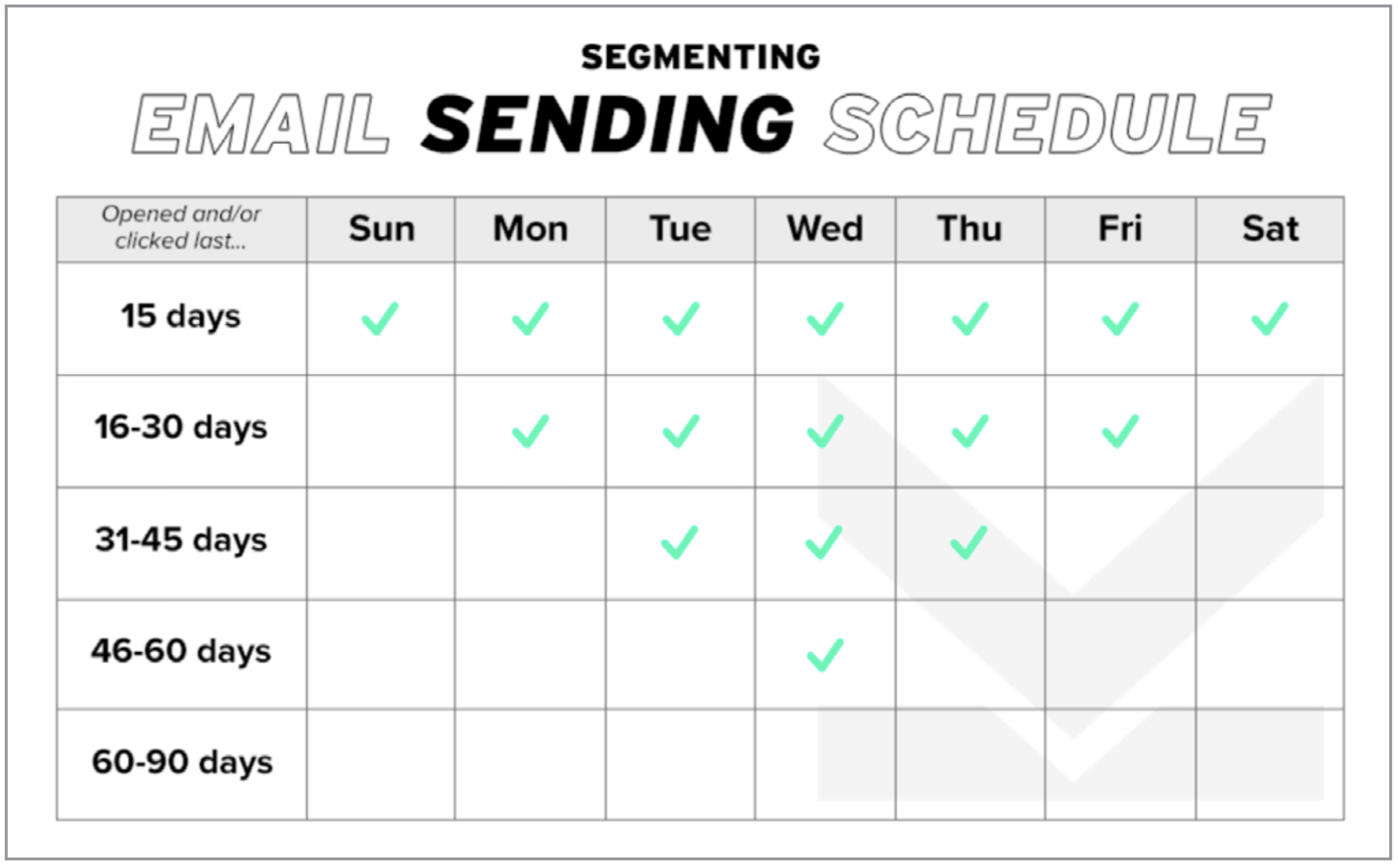
4. List Reporting: Monetize Your Metrics
The fourth and final benchmark in this email deliverability guide is reporting on your metrics. Without actively monitoring metrics and results, it’s impossible to know if your emails are converting or not.
We’ve put together a list of the top metrics you should consider tracking and reporting on when running email marketing campaigns.
- Open Rate: The percentage of your list who opens each email.
- Clickthrough Rate: The percentage of readers who click a link within your email.
- Bounce Rate: How many email addresses did not receive your email.
- Unsubscribes: How many readers unsubscribe from your email can tell you how engaging or relevant your content is to readers.
- Spam Complaints: These are to be avoided at all costs. Being flagged as junk hurts your deliverability more than any other factor.
If you’re seeing a high number of spam complaints, make sure you’re avoiding certain mistakes such as:
- Using flagged words throughout your email content.
- Including gibberish in your send.
- Using all caps in your subject line.
- Using too many symbols in your email content.
Copy Corner
As always, each month we try to share copywriting principles that have withstood the test of time,
and act as the foundation of direct response copywriting and marketing fundamentals.
This month, we’re breaking down the simple statement:
“Our Clients Sell Products, We Sell Ideas…”
When we’re in the brainstorming phase of writing ads, we try to think of the “big idea”. Big ideas are born out of creative thinking, and those ideas are sold over and over again until they physically run their course dry.
Think big, think outside the box, and sell big ideas for our clients with conviction.
This brings us to a recent brainstorming session we had, where Anthony Celestino, Ad Creative Manager at Strikepoint, was trying to tie emotion into a product selling investment opportunities.
He thought back to the way his father described the stock market to him when he was little. Since his family had some shares of Home Depot, his dad explained to him…
“You see that door? When you own stock in a company, you own a piece of it. That front door is yours. You own the front door to Home Depot.”
Now, obviously it’s not as straightforward as that statement. But the idea remains the same.
Zig Ziglar famously said: “People don’t buy for logical reasons. They buy for emotional reasons.”
You want to sell your client’s products through emotional ideas. You need to convince them that whatever you’re offering, solves something they are seeking.
This can be exemplified through many different industries.
“Sure, you could put up the capital to own a penthouse suite for $2,000,000 and settle for an 0.2% return, but what if you owned the front door of the building for $1,000 while making profits from the entire revenue of the condominium?”
“Ever dreamed about owning an AirBnB… but you can’t afford to buy a house? One cryptocurrency is revolutionizing the entire industry allowing individuals to purchase a fraction of a house and earn a share of the profits“
This is how “big ideas” are born.
Innovative Tech: Miro Mind- Mapping
At Strikepoint, we’re always at the forefront of marketing innovation. Whether that’s a new tool, platform, system, or software, we’re eager to try it out and report back to you – our readers.
That’s exactly what happened when we first heard about Miro.
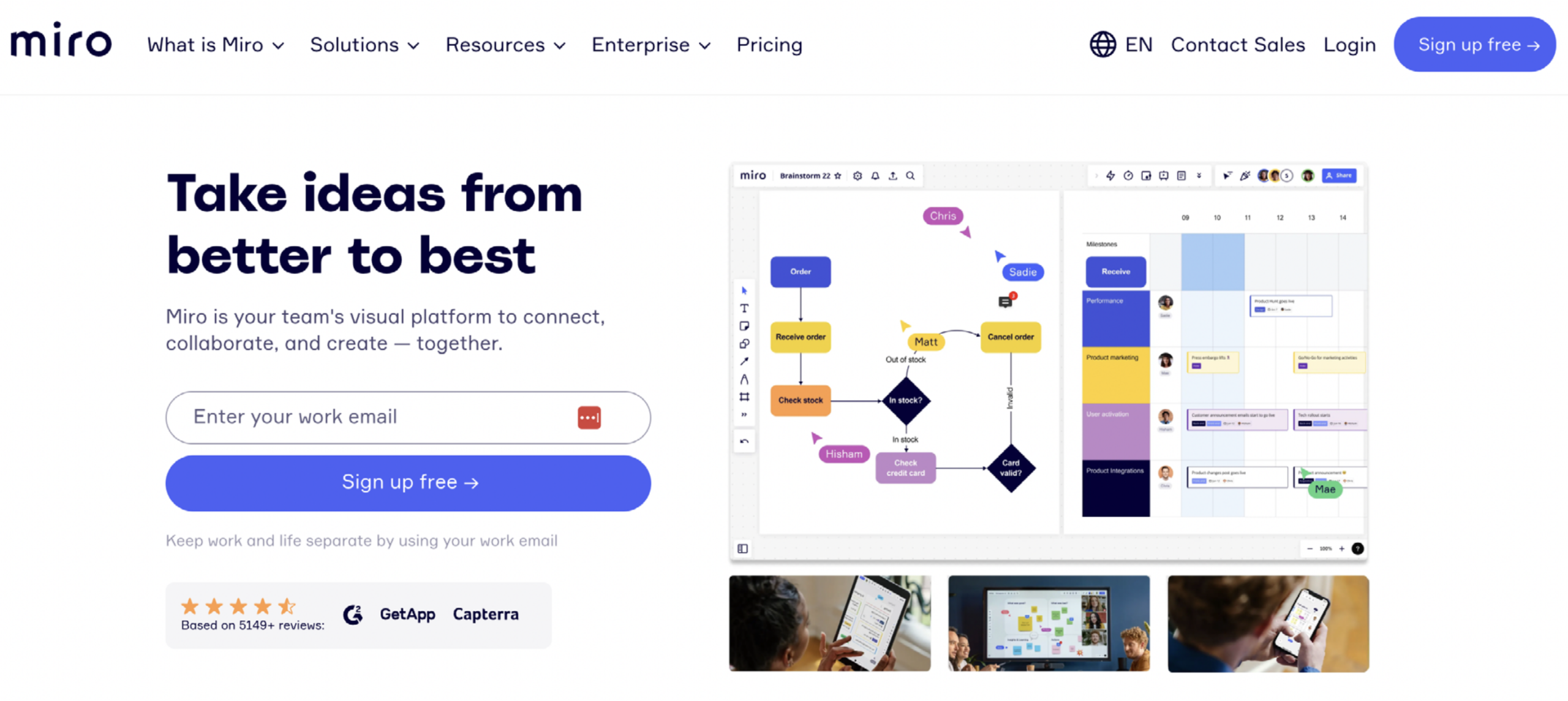
Miro is a collaborative software that allows you to visually connect, co-operate, and create projects with one another.
You can map funnels using technical diagrams, you can host brainstorming sessions using mind maps and flowcharts, and you can even connect other platforms like Google Drive, Slack, Hubspot, and more to integrate directly with Miro.
Also, you’re able to model out your customer journey map, and you can create a wireframe of your website directly from the platform.
Above all, the thing about Miro that makes it so unique and valuable, is that it uses Artificial Intelligence to help enhance your work.
Take the mind-mapping use case for example. You can discover new topics and explore/expand ideas by automatically generating expansive, multi-branched mind maps using Miro AI.
Think of blog posts. Say you want to generate a comprehensive content marketing strategy by publishing blog content in hopes of boosting your local SEO rankings.
You can create a mind map of blog topics centered around your local SEO Keywords, and “generate” ideas and titles using Miro AI.
One of the key features of Miro that makes
it so beneficial for our team is the real-time collaboration aspect, along with the ability to generate an infinite number of canvases.
Just take a look at the example below →
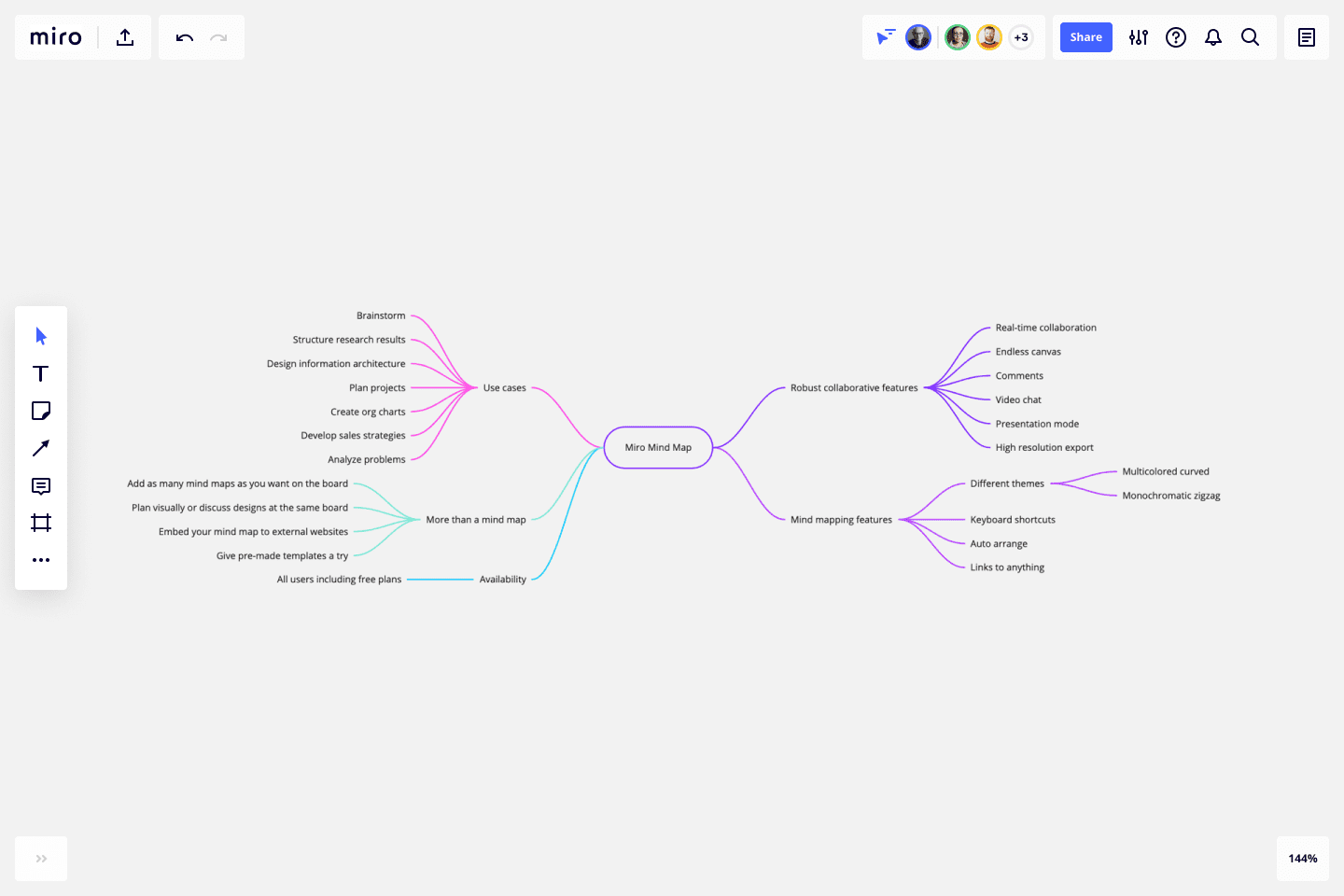
Miro is free to use, and you can learn more about the platform here.
CASE STUDY: Micro Moments in Hospitality Marketing
With every industry or niche, there’s going to be differences among the customer journey. When selling DTC products online, the sales journey is vastly different than selling a $50,000/month coaching program.
There are instances in these journeys where consumers turn to their devices for quick answers to their questions.
For businesses, understanding these “micro- moments” can be the key to successful marketing campaigns.
This framework is frequently seen in the Hospitality Industry.
These micro-moments include:
- I-want-to-know: When consumers are exploring or researching but are not necessarily in purchase mode.
- I-want-to-go: When consumers are looking for a local business or are considering buying a product at a local store.
- I-want-to-do: When consumers want help with completing a task or trying something new.
- I-want-to-buy: When consumers are ready to make a purchase and may need help deciding what to buy or how to buy it.
Micro-moments allow you to understand what the consumer is looking for, whether that be a beach holiday, a ski-trip, or a city tour. Knowing this information allows for more personalized marketing, which can lead to higher conversion
rates. Being present and top-of-mind in these micro-moments can give you an edge over competitors who are not optimizing for them.
So how do you stand out from the crowd and be seen during these micro-moments?
Through targeted advertisements, SEO, and content marketing campaigns.
- Targeted Ads
- Real-Time Room Availability & Pricing: Use Google Ads to show real-time room availability and dynamic pricing. This captures the ‘I-want-to-buy’ moment by offering the most compelling room options and deals when the user is ready to make a decision.
- SEO (User Intent Articles)
- Hyper-Localized Content for ‘I-Want-To-Go’ Moments: Create SEO-optimized articles that focus on local attractions, events, or unique selling points of your hotel. These articles should target long-tail keywords like “best family-friendly hotels near [local attraction]” to capture users in their ‘I-want-to-go’ moments.
- Social Media Campaigns
- Time-Sensitive Promotions with User- Generated Content: Launch social media campaigns that feature limited-time promotions, backed by user-generated content (UGC). For example, if a guest posts a stunning sunset photo from your hotel, turn that into a 48-hour campaign offering a special ‘Sunset Dinner Package.’ This captures the ‘I-want-to-experience’ moment.
CASE STUDY: Converting Lost Opportunities – The Power of Exit Pops
In the world of Paid Media, one tool that’s often overlooked is the exit pop. For anyone unfamiliar, an exit-pop is a prompt appearing when a visitor attempts to leave your webpage, often with a goal or CTA of retaining interest or taking action.
We have recently implemented various exit-pop strategies within our Unstoppable Prosperity campaign with Charles Payne.
On our dedicated landing pages and various funnel pages, when a user would attempt to click out, they were met with the following exit pop:

This pop-up bears the message: “Don’t Miss Out! Workshop Attendees Claim over $116 in Value for Free!”
Within the messaging, emphasis is also placed on the implied value of what was being offered. For instance, to get to the $116 value in the headline, we broke down the fact that Charles’ Free Live Event ticket was valued at $47, his ebook is valued at $29.95, and his video training is valued at $39.95, bringing the total value to over $116.
However, the brilliance of this exit-pop lies in the dual CTAs seen at the bottom.
The user is met with two options.
Option 1: Yes! I’d like to secure my free seat.
OR
Option 2: No thanks, I don’t want to claim $116 in value.
This subtle copywriting tactic leverages a psychological trick regarding loss aversion, encouraging visitors to reflect on the perceived value before making a final decision.
The outcome of this? These exit pops have been converting at roughly 20%, which is a significant increase in converting visitors attempting to leave the page.
This small but mighty win exemplifies the importance of exit pops when done correctly and strategically in paid media campaigns.
TikTok Summer Updates 2023
Speaking of Paid Media – it’s never a complete Clicks to Conversions Report without highlighting some of the killer ad creative we’ve been seeing.
Things just got a little easier when it comes to developing TikTok ad creative.
For those that have been with us for a while, you know the immense value the Facebook Ads Library gives marketers and advertisers. You can search, sort, and scroll through every single advertisement on the platform, organized by the advertiser.
While this library has been available since 2018, it’s been nearly impossible to keep tabs on other social platforms like Twitter, Youtube, and TikTok.
That is, until recently.
TikTok just launched its very own TikTok Ads Library, giving you more access into what businesses are running on the short-form video platform.
This resource gives you the ability to research based on advertiser name OR keyword, giving you even more data to sift through. This allows you to keep closer tabs on your competition, while also allowing you to source new ideas and inspiration.
In addition to the TikTok Ads Library, TikTok has also begun improving the functionality of their pixels by collecting and using landing page information such as metadata and button clicks, two things they previously did not collect.
This new information will allow TikTok to provide recommendations on how to enhance your pixel event setup and even offer automated solutions for doing so. This can improve your ad delivery to better optimize future ad campaign delivery.
What’s Hot At Strikepoint
A LOT has been hot in the world of Strikepoint over the last month, and not just the scalding temperature of the sun in Orange County.
I’m excited to share an all new episode of Conversion Experts with you!
Dive into this latest episode where Strikepoint’s Presidnet, Bryan Rosenkrantz, and Social Media Manager, Parker Erickson, uncover how to be 100% authentic and 1000% more engaging on social media.
Parker’s immense experience in the world of social has made him a valuable resource for our clients as we continue expanding into the world of content marketing.
Give this episode a watch, and be sure to let us know what you think!
Keeping up with the ever-moving content train that is Strikepoint, we’ve been pumping out more informative and educational blog posts for you to become a better marketer.
Search Advertising is crucial for any business running paid media. We recently published an article outlining 3 easy to implement hacks that can lower your cost-per-click in search ads.

You’ve probably heard the term “Content Discovery Platform” before – but do you really know what it means? Dive into one of our recent blog posts where we share a beginner’s guide to Taboola and Outbrain, two of the largest content discovery platforms in the world.

As always, let us know if you want to see any blog posts on specific topics or platforms!
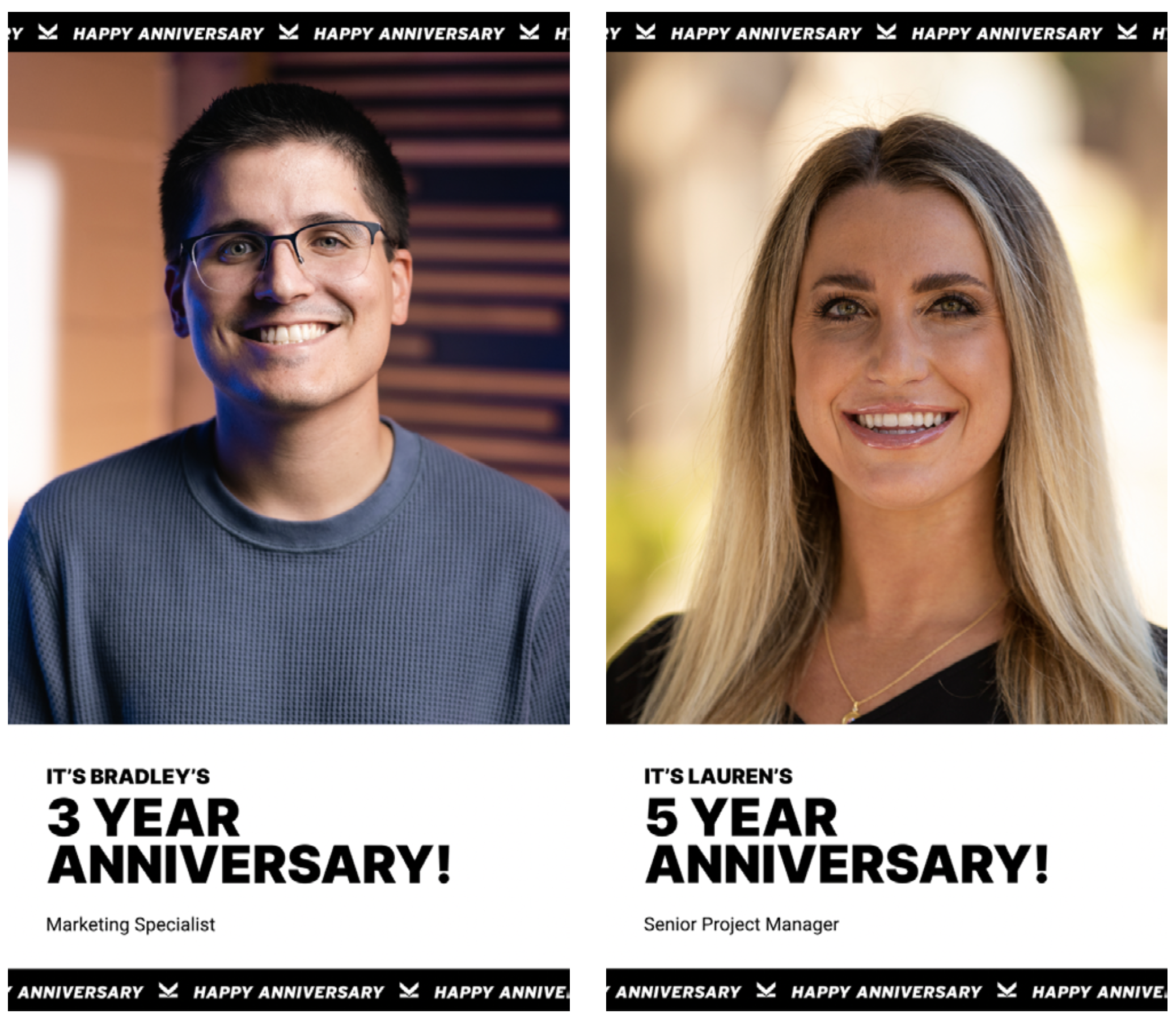
Rounding out August, we celebrated a few birthdays and anniversaries for members of our team, including Lauren Hickey celebrating her 5th anniversary with Strikepoint and Bradley Simon marked 3 years this past month. Thanks for all you do, team – and here’s to many more!
That’s it for this month’s edition of the C2C Report! As always, if you have a question, or if there’s anything you’d like to see more of or that we can do better, please shoot me an email and let me know directly.
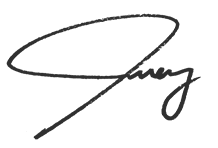
Jeremy Blossom
CEO, Strikepoint Media
P.S. Subscribe to our YouTube channel if you want more regular content and guidance for free.





